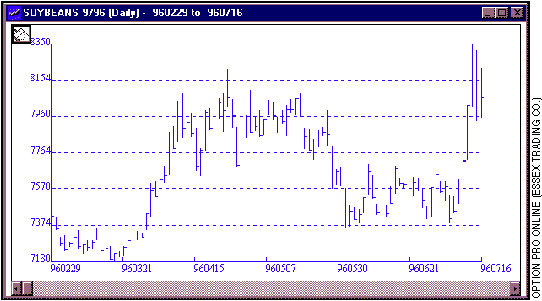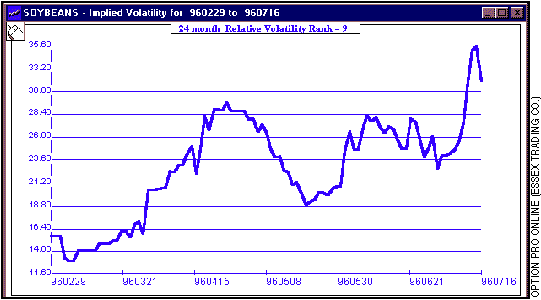
The options trader has available many different strategies, virtually to suit every need and intent. Here's how to use the credit spread strategy.
M ost of the money made in options trading is made by those who write options rather than by those who buy them. This is because an option is a wasting asset, the price of which is composed of intrinsic value (equal to the amount by which the option is in the money) and time premium. (Out-of-the-money options have no intrinsic value and their prices are composed entirely of time premium.) Options lose all of their time premium by expiration, which is referred to as time decay. Because they have no intrinsic value, out-of-the-money options expire worthless. Option writers take advantage of this by selling option premium and waiting for time decay to work in their favor.
The downside is that writing naked options entails assuming unlimited risk, a risk that most traders simply cannot afford to take. As a result, many option traders never consider writing options. However, there is a strategy that allows even small traders to write options to take advantage of time decay without exposing themselves to unlimited risk. This strategy is referred to as selling a vertical credit spread.
Selling a vertical credit spread involves selling an out-of-the-money call or put option and simultaneously buying a further out-of-the-money call or put. This strategy allows traders to profit from time decay by selling out-of-the-money options. By also buying a further out-of the money option, the trader is not exposed to the unlimited risk associated with selling naked options.
The primary disadvantage of this strategy is that profit potential is limited to the difference between the price of the option sold and that of the option bought. In addition, downside risk usually exceeds the profit potential. A trader might have to risk a loss of $1,500 to make a profit of $500.
Options lose all of their time premium by expiration, which is referred to as time decay. Because they have no intrinsic value, out-of-the-money options expire worthless.
EXAMPLE TRADES
Example 1:
Soybeans on 7/16/96
September soybeans (Figure 1) rallied sharply to 835 two days prior (July 14), then fell back to close at 807, thus creating a strong resistance point at 835.

Figure 1: September 1996 Soybeans. On July 16, the price fell back to close at $8.07 per bushel after hitting $8.35 two days prior. Resistance was established at $8.35. In addition, implied option volatility soared to 35 (Figure 2) before backing off slightly. As of the close on July 16, the relative volatility rank was 9 (out of a possible 10), suggesting that an opportunity existed to sell premium.

Figure 2: Implied Volatility. The implied volatility reached 35%, which placed the reading in a rank of nine out of a possible 10 for the last 24 months.